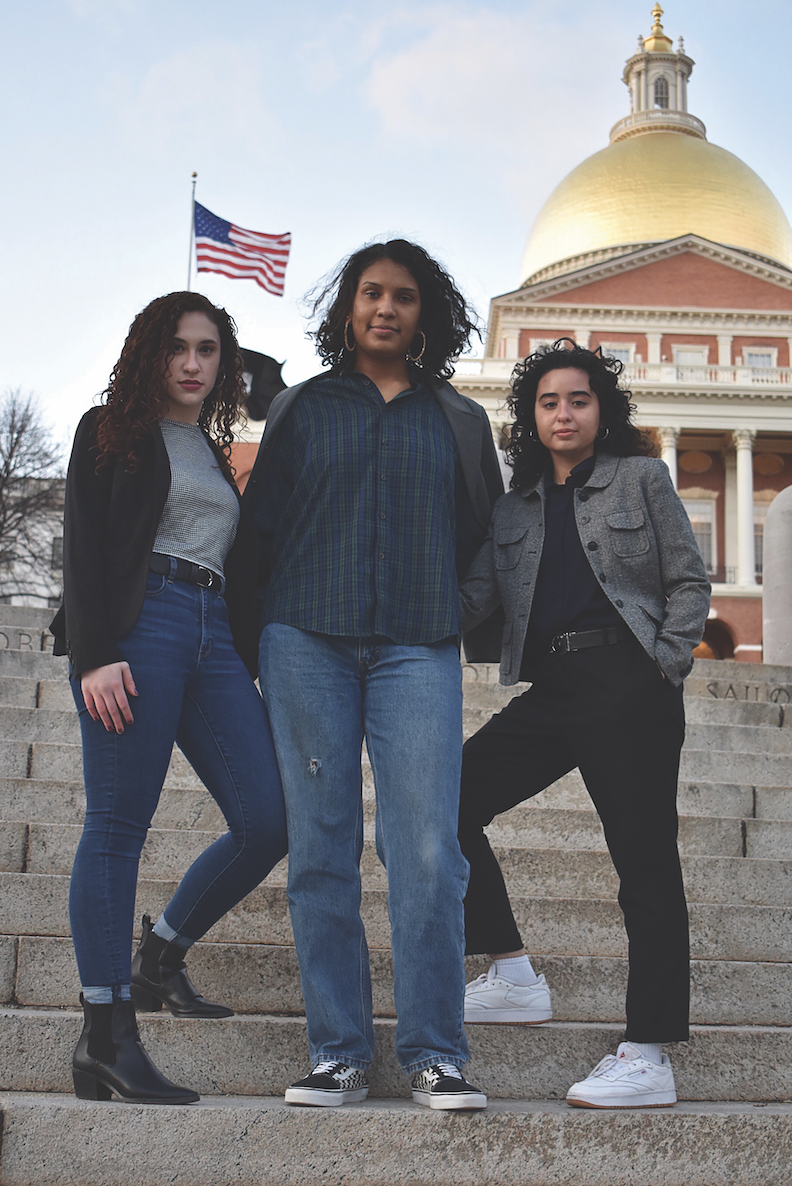Crown of Curls
I remember the day well: it was early in my freshman year of college, and I had managed to snag a spot as the international correspondent on a campus news show. It was my first-ever episode, and I had worn my naturally curly hair to set. I took a look around at the other correspondents and anchors and quickly realized I was the only one with textured hair. So, I went home that night and searched popular news programs, including WBZ Boston and NBC Nightly News with Lester Holt. Not only was there not much diversity in the newsroom, but the few anchors of color did not wear their natural hair on the air. I then realized that not only could I relate to this issue, but that it is a problem that spans decades in my prospective industry.
According to The Washington Post, as of December 2019, only three states currently have protections in place for discrimination against employees who wear natural or protective hairstyles (this could be curls, afro-textured hair, braids, or locs). These states are California, New York, and New Jersey. This pressure to whitewash newsrooms to appear “professional” runs so deep that some may not even realize it. I once brought up the issue of straight-haired news anchors in class, and my professor was astonished—she had never thought of it as an issue. And while it may seem like “just hair,” the unsaid suppression of natural hair being worn on the air has a profound impact on the careers of news anchors and reporters, and the relationship with their viewers.
In 2019, MSNBC reporter Simone Boyce, who identifies as biracial, returned to wearing her natural hair on TV. In a column on Today’s website, she revealed she had started to receive less and less freelance opportunities immediately after she ditched her flat iron.
Back in 2018, meteorologist Corallys Ortiz, a half-Puerto Rican and half-Dominican meteorologist on WBBJ TV in Jackson, Tennessee, chose to wear her naturally curly hair on the air. She received several hateful voicemails from a woman who called her multiple racial slurs before ultimately telling her to “make her hair more normal” on the air.
The constant perpetuation of Eurocentric beauty standards creates a massive rift between journalists and the communities they cover. In cities like Los Angeles, for example, why should reporters like Simone Boyce be left to straighten their hair every day when they are reporting in a majority-minority city? The answer is that they shouldn’t. Reporters should feel free to look like themselves—and the communities they cover.
Photographed by Eliana Flores-Barber
I grew up half-Ashkenazi Jewish and half-Puerto Rican—and with a head full of dark, auburn curls. I inherited my hair from both sides of the gene pool and grew up feeling like I constantly stuck out. While I have definitely faced challenges with tangles and time management in the morning over the years, I have grown to love my naturally curly hair. It is part of my identity, and I wouldn’t want to sacrifice it for the sake of “professionalism,” as many people like me have seemed to be forced into doing. Professionalism is work ethic, organization, and attitude—not hair. So why do so many people associate professionalism with appearance?
Emerson College journalism professor Cheryl Jackson reflected on her experience with hairstyles in the broadcast industry. “When I was in the news business, I don’t think I saw anyone wearing natural hair. It was totally unacceptable. Everyone had about the same hairstyle. Straight hair, cut in a bob,” Jackson says. “I was told by someone who worked in the business that you couldn’t get through the door to do good reporting unless you looked like a reporter. There’s usually only one, or the very most two, black reporters in a newsroom, based on my experience.”
Lack of diversity in the newsroom has created a major lack of representation for reporters of color. Growing up, I had never seen anyone who looked like me on television news. I felt like it was something I could not pursue because I didn’t have the “look” for it. But, in reality, news reporting doesn’t need to have a “look”— it needs to have integrity, honesty, and diversity, regardless of hairstyle.

